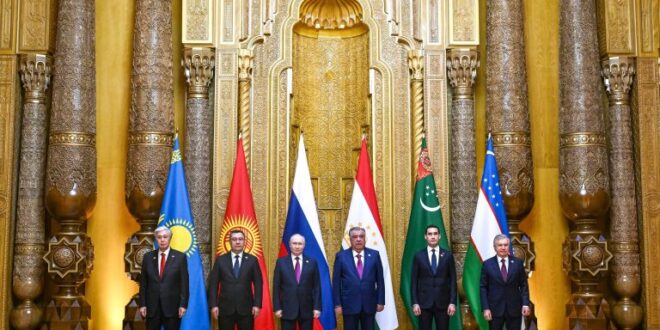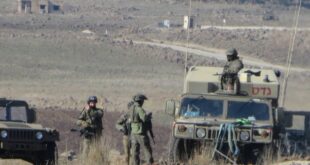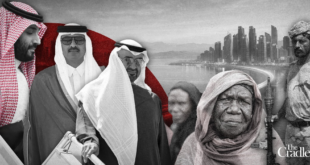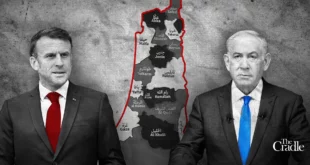Bottom Line Up Front
Over the past year, Russian authorities have intensified raids on migrant workers from Central Asia — actions widely viewed as a reflection of rising public Islamophobia and xenophobia and a key source of mounting tension between Moscow and the region.
The People’s Republic of China (PRC) also wields significant influence throughout Central Asia but treatment of Uyghurs in Xinjiang has strained the PRC’s image across the region, where ties to the Turkic Muslim population run deep.
Central Asia — rich in rare earth elements and eager to diversify its partnerships — offers the U.S. an alternative pathway to reduce supply chain dependence on Beijing, however it would take a long-term investment politically, economically, and diplomatically.
In recent years, Türkiye has worked to leverage its cultural connection and growing strategic importance to deepen trade and investment across the region — signaling its desire to evolve from a traditional middle power into a great power.
Last week, a summit between leaders from Russia and the five Central Asian republics — Kazakhstan, Uzbekistan, Kyrgyzstan, Turkmenistan, and Tajikistan — was held in Dushanbe, Tajikistan. At the meeting, Russian President Vladimir Putin called on the region to deepen trade and infrastructure ties with Moscow, emphasizing that Russia’s commerce with the bloc had surpassed $45 billion over the past year. The summit concluded with the signing of a Joint Action Plan for 2025–2027, pledging closer cooperation on security, migration, and economic integration. Yet the summit unfolded against a backdrop of growing tension, due in large part to the mistreatment of Central Asian migrants in Russia.
Over the past year, Russian authorities have intensified raids on migrant workers from Central Asia, closing businesses, conducting mass detentions, and deporting thousands of laborers — actions widely seen as scapegoating tactics amid growing public Islamophobia and xenophobia. According to the Carnegie Endowment for International Peace, Russian media and officials have fueled “migrantophobia” by consistently linking Central Asians to terrorism and crime, particularly after the Crocus City Hall terrorist attack in March 2024, which Russian investigators claimed involved several Tajik nationals.
This wave of “migrantophobia” has affected not only the official treatment of Central Asian workers but also their daily lives, even prompting the Tajik government to advise its citizens against traveling to Russia. Both Tajikistan and Uzbekistan issued formal protests following the mass detentions of their citizens in Moscow, with Tajik officials summoning the Russian ambassador and demanding an end to what they described as “discriminatory and degrading” treatment. In April, Kyrgyz security forces detained four Russian citizens in response to reports that FSB officers had beaten Kyrgyz nationals in Moscow.
These incidents coincided with the rapid deterioration of relations between Russia and Azerbaijan, a fellow majority-Muslim post-Soviet state, in June. Ties first soured after Russian forces shot down an Azerbaijani aircraft over Chechnya, reportedly by mistake. Relations further declined following reports of Russian mistreatment of two Azerbaijani prisoners. In response, Azerbaijani authorities detained Russian journalists, restricted Russian-language media operations, and summoned Moscow’s ambassador to protest what they described as “unfriendly interference.”
While tensions between Central Asia and Russia had been simmering before this incident — with several Central Asian governments already issuing public statements and summoning Russian diplomats — Azerbaijan’s sharp escalation with Moscow underscored Russia’s waning influence across the post-Soviet space. It also demonstrated how effective assertiveness could be, after years in which Central Asian states had approached such disputes with quiet diplomacy.
Aside from Russia, the People’s Republic of China (PRC) also wields significant influence in Central Asia due to its geographic proximity and vast economic footprint. The PRC is now the largest trading partner for most of the region, surpassing Russia in all Central Asian republics except Tajikistan. Its investments stretch across energy, transport, and manufacturing — from the China–Kazakhstan oil pipeline and the Khorgos dry port on the Kazakh border, to the China–Kyrgyzstan–Uzbekistan railway currently under construction. These projects form part of Beijing’s broader Belt and Road Initiative, designed to link Central Asia more closely to Chinese markets.
Yet Beijing’s treatment of Uyghurs in Xinjiang has tainted its image across the region, where cultural and religious ties to the Turkic Muslim population run deep. For centuries, Xinjiang — historically known as East Turkestan — has been closely linked to Central Asia through trade, shared ancestry and linguistic and religious traditions. Despite its attempts to repair this perception through Belt and Road investments and the establishment of “vocational training centers” in Kazakhstan and Uzbekistan — marketed as educational hubs but often viewed as propaganda tools — many in Central Asia remain skeptical. These centers have been closely tied to Chinese state funding and ideological programming, offering Mandarin instruction, political education, and technical training designed to align local labor forces with Chinese corporate and industrial standards. Critics in both Kazakhstan and Kyrgyzstan have accused them of functioning as soft-power extensions of Beijing’s domestic reeducation model in Xinjiang, which some have compared to concentration camps, with accusations of sterilization and forced labor, rather than as genuine opportunities for skill development.
Strained relations between Central Asia and Russia and the PRC could potentially present the United States with an opportunity to build a stronger relationship with the Central Asian republics. While the Biden administration sought to reengage the region through high-level summits and governance-focused diplomacy, the current administration’s more transactional approach — and its reduced emphasis on democratic norms — has paved the way for easier, less politically constrained partnerships. Biden’s approach substantively achieved limited results; with some economic and security aid but nothing on the scale of Russian or Chinese investment. However, several economic and energy agreements under Trump have already been signed, such as Kazakhstan’s $4.2 billion locomotive deal with U.S.-based Wabtec and Uzbekistan’s purchase of 22 Boeing aircraft announced during the 2025 UN General Assembly. Central Asia also presents strategic potential as an emerging energy hub, boasting vast oil, gas, and uranium reserves, and occupying a pivotal location wedged between Russia and the PRC— two powers increasingly at odds with Washington.
While the U.S. has shown limited appetite to firmly cement itself in the region, the intensifying U.S.–China trade war and global competition over critical minerals could potentially change that calculus. Central Asia — rich in rare earth elements and eager to diversify its partnerships — offers Washington an alternative pathway to reduce supply chain dependence on Beijing. The region’s governments have responded positively to U.S. overtures, with Kyrgyz President Sadyr Japarov and Kazakh President Kassym-Jomart Tokayev openly praising Trump’s rollback of U.S. media and aid institutions, while Uzbekistan’s Shavkat Mirziyoyev announced an $8 billion Boeing deal. These countries likely view closer ties with Washington as a way to balance, and gain leverage over, their fraught relationships with both Russia and the PRC.
However, according to a report from the Atlantic Council, several challenges hinder Central Asia’s rise as a critical minerals powerhouse. The region faces high transport costs, inadequate export infrastructure, and a high-risk investment environment that undermines commercial viability. This environment is driven by corruption, weak rule of law, and unpredictable regulatory changes — such as the 2022 Kyrgyz nationalization of a Canadian-owned gold mine, and Tajikistan’s expropriations of several foreign-operated aluminum mines — that deter long-term foreign investment. These structural constraints have led Atlantic Council analysts to conclude that, in the short to medium term, the United States should rely more on established suppliers such as Canada and Chile for critical minerals, while continuing to cultivate long-term strategic ties with Central Asia –– something it may not have the appetite to pursue amid more pressing geopolitical priorities, including the Gaza peace plan, the war in Ukraine, and efforts toward Iranian nuclear disarmament
On the other hand, these fraught relationships have also opened the door for Türkiye, a player often overlooked in discussions about Central Asia. Much like Russia’s enduring cultural influence from the Soviet era, Türkiye also enjoys deep historical, linguistic, and cultural ties to the region, as most Central Asian peoples speak Turkic languages and share overlapping traditions and ancestry. For decades, Türkiye has served as a symbolic and cultural bridge to Central Asia — promoting shared identity through education, religion, and cultural exchange. The Diyanet, Türkiye’s Directorate of Religious Affairs, has funded mosque constructions and religious education and outreach programs throughout the region, as well as sponsored scholarships for Central Asian students to study in Turkish institutions.
In recent years, Türkiye’s influence in Central Asia has moved beyond soft power. Ankara played a pivotal role in mediating the 2023 border conflict between Tajikistan and Kyrgyzstan, helping to defuse tensions that threatened to spiral into a broader regional crisis. It has also deepened military cooperation across the region, particularly with Kazakhstan and Kyrgyzstan. As Russia’s war in Ukraine disrupts its defense exports, Kyrgyzstan has increasingly turned to Türkiye to fill critical gaps in its military supply chain. According to local reports, Bishkek is now seeking not only missile defense systems from Ankara but also the establishment of a joint training center — a development that would mark a notable shift away from reliance on Russian security guarantees, including the Russian operated Kant Air Base outside of Bishkek, and the Collective Security Treaty Organization (CSTO).
Though Türkiye cannot match the financial weight of China or the Central Asian dependence on migrant work in Russia, in recent years Ankara has worked to leverage its cultural connection and growing strategic importance to deepen trade and investment across the region. Its long-standing focus on infrastructure, construction, and logistics has paid off: Turkish exports to Central Asia reached $12 billion in 2022, a 30 percent year-on-year increase. Bilateral trade with Uzbekistan rose to $2.23 billion in 2024, while imports from Kazakhstan reached $3.39 billion, both showing strong upward momentum. Türkiye has also signed Free Trade Agreements (FTAs) with Kazakhstan (2016) and Uzbekistan (2024), with the latter agreement elevating ties to strategic partnership status. Türkiye’s growing role in Central Asia is only one part of its broader regional reach, which now spans much of the post-Soviet space and the Middle East. Its expanding influence across these regions — and increasingly beyond — signals Ankara’s desire to evolve from a traditional middle power into an emerging great power player.
 Eurasia Press & News
Eurasia Press & News



